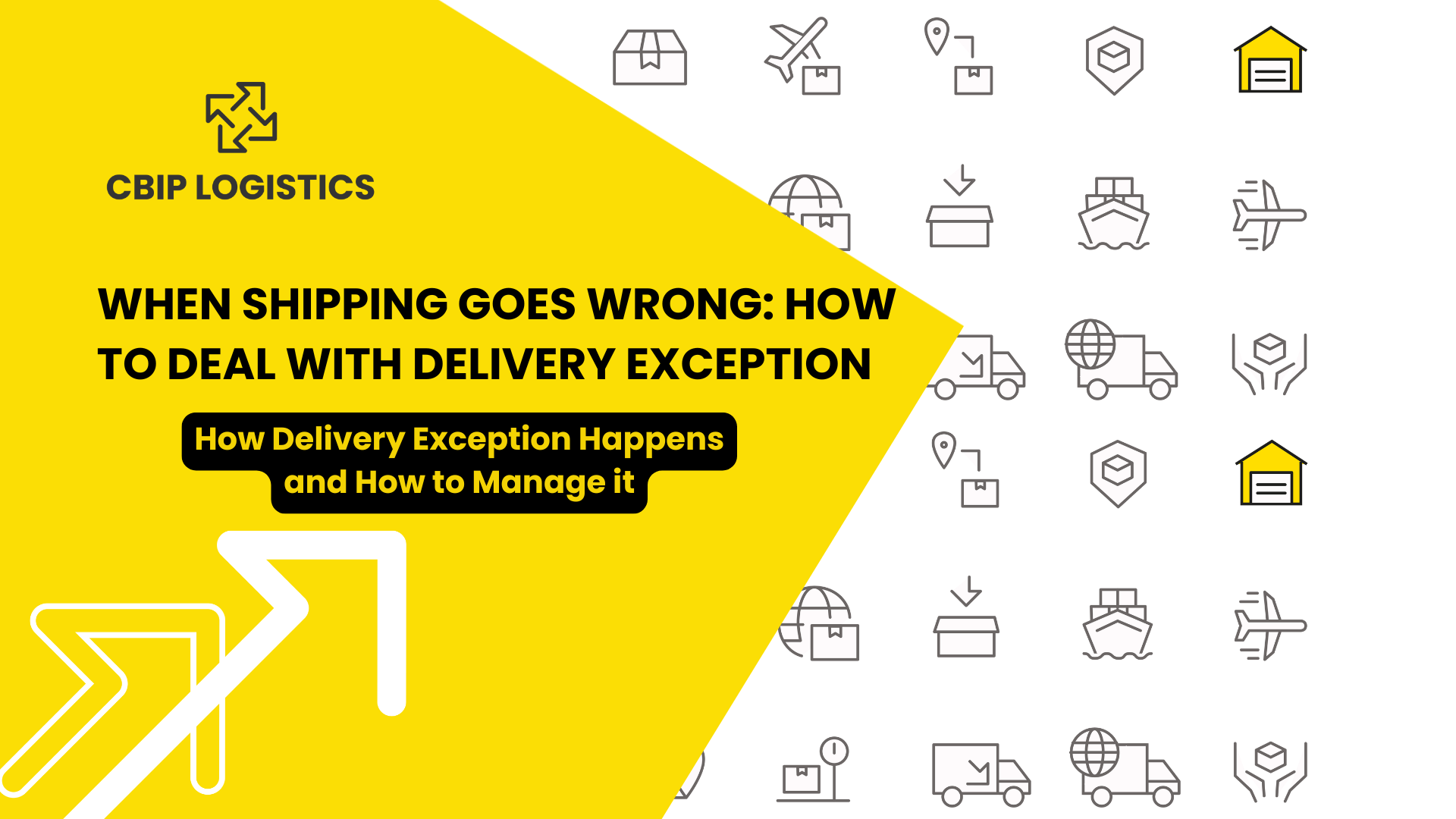When Shipping Goes Wrong: How to Deal With Delivery Exception

Tracking notifications are a helpful tool to update your customers and make sure your package gets to the right destination on time. But what do you do when something goes wrong in transit?
When an unexpected and unavoidable event is delaying the delivery of your package, many carriers refer to it as a delivery exception.
This could happen due to a variety of reasons, including:
- Clearance delay at customs
- Missing or incorrect documents (including labels)
- Holiday closure impacts
- Unable to get a signature when one is required
When the package is recognized by the carrier as having an issue that makes it undeliverable, they create an exception code. That code is the tracking notification you receive that lets you know what the issue is.
However, even if you receive a tracking notification about a shipping exception, what went wrong is not always clear - nor is the next step to get things back on track.
Here’s what to do if you get a delivery exception code.
Read About CBIP’s Global 4PL Logistics Services
1. Track proactively
The last mile of fulfillment is notoriously hard to manage and get right. Keeping track of your shipments carefully is a great way to be sure that if something is delayed, you can fix the issue promptly.
If you aren’t able to proactively keep track of shipments, you might want to consider hiring a third-party provider who can manage fulfillment for you.
2. Contact the carrier
When a delivery exception occurs, carriers will provide you with a delivery exception code. You can use that code to look up what has happened and what needs to be done.
In the case of a more complicated issue, such as a faulty address or destroyed label, you may need to take action immediately.
Particularly if you have international shipments, problems could be complex. If something is stuck at customs, you may need a party to intervene to get the package moving again.
3. Contact the customer
Contacting them proactively is the best way to avoid losing a customer over a shipping issue.
If something will be delayed, let them know and apologize. Be specific about anything they will be offered for their patience, how long the delay will take, and what they should expect.
4. Refund or resend the package
If it's not possible to deliver the package due to damage or other issues, you will need to ask the customer whether they would like the order refunded or resent.
Related: Last Mile Logistics: A Comprehensive Guide
Tips to avoid delivery exception
-
Prioritize careful labeling
If your carrier cannot read the address or scan the barcode, they cannot deliver the package.
In order to avoid issues with addresses, use address verification software. These types of software can verify and edit addresses to ensure they exist and are typed out in the correct format.
This is particularly helpful if you are sending packages to different countries to make sure that you have no spelling or formatting errors
-
Provide tracking throughout
At a time when package theft in many urban areas averages around 15%, you need to take tracking seriously.
Providing accurate tracking updates to your customers allows them to collect the delivered package promptly after it is delivered, which avoids missed deliveries and stolen packages.
-
Shipping abroad? Work with a customs broker
Cross-border e-commerce is one of the many things that has grown with e-commerce, and it's a wonderful option to have for DTC businesses that are starting to gain popularity abroad.
However, with the opportunity of cross-border shipping comes the increased threat of delayed, damaged, or lost packages.
If you ship goods internationally, chances are that you’ve had to deal with something stuck at customs. You may get a notification that states “held at customs”, but you may also get a more cryptic tracking notification like “clearance delay”.
There are a variety of reasons that your goods may be held, including:
- Missing documentation
- Missing part of a multi-piece shipment
- Further regulatory processing needed
Making sure that you have the proper tariff codes for each SKU shipped will significantly reduce your risk of customs delays. If that is not enough risk mitigation for you, you may want to consider working with a partner who has local operations and can help out.
-
Work with a 4PL
For e-commerce brands, a delivery exception is a part of life. However, you need a way to quickly solve problems when they arise, plus strategies to avoid delivery mishaps in the future.
That’s why you work with a partner who can take care of all of that for you. The great thing about working with a 4PL like CBIP is that we not only build your logistics operation and optimize it to improve your fulfillment: but we also help you out on the ground by solving problems as soon as they occur.
With a 4PL like CBIP, you get all the personalized customer service you would expect from a small,owner-lead company, coupled with the reach of an international logistics provider. That’s because instead of owning our own logistics assets like trucks and warehouses, we work with an extensive network of providers located all around the world.
We vet them, we link them to our technology platforms, and we set them up to handle your logistics, with us at the top, overseeing and facilitating everything.
If you are ready to see how your fulfillment process could improve, talk to us today. Reach out for a free logistics consultation with me or another CBIP pro.






